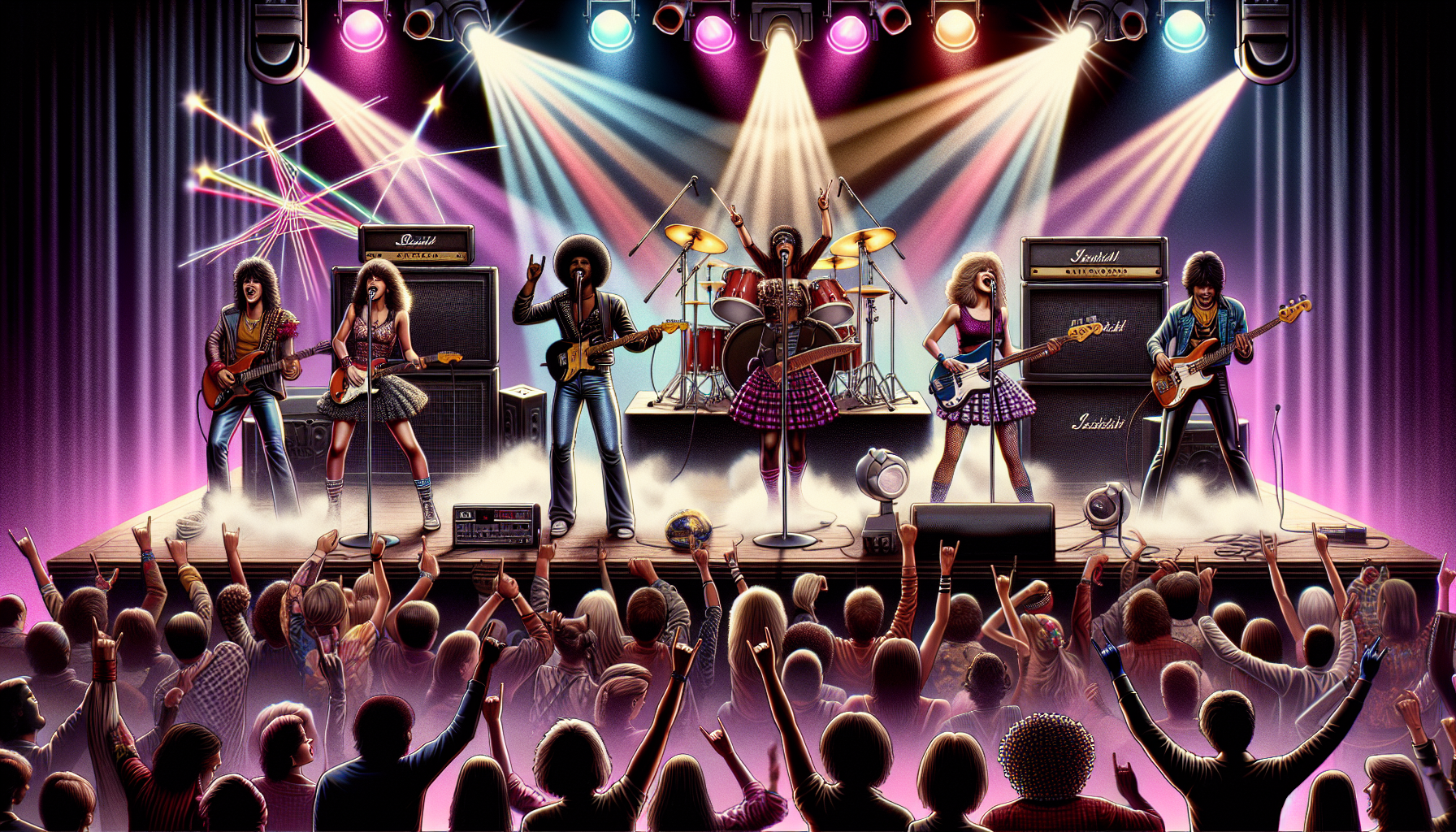Why 1975-1985 Was the Best ten years in Music

Music is subjective, but some eras stand out as undeniable golden ages. For me and many others, 1975 to 1985 represent the peak of musical innovation, performance, and cultural impact. This was a time when rock, pop, metal, new wave, and even the early seeds of hip-hop converged to create an unparalleled era of sonic excellence. But what made this decade so special? Let’s break it down.
1. The Pinnacle of Album-Oriented Rock
The late ’70s and early ’80s saw the dominance of album-oriented rock (AOR), where bands crafted records meant to be experienced as full albums rather than just collections of singles. Consider albums like:
- Pink Floyd – The Wall (1979)
- Bruce Springsteen – Born to Run (1975)
- Fleetwood Mac – Rumours (1977)
- The Eagles – Hotel California (1976)
- Rush – Moving Pictures (1981)
These albums weren’t just commercial successes; they were artistic statements that showcased the full range of a band’s capabilities, blending lyrical storytelling with unparalleled musicianship.
2. The Evolution of Metal and Hard Rock
If the early ’70s gave birth to hard rock and metal, then 1975-1985 perfected it. This era saw bands pushing their sound further than ever, leading to the rise of some of the most incredible metal acts ever.
- AC/DC – Back in Black (1980): One of the best-selling albums of all time, full of raw energy and relentless riffs.
- Black Sabbath’s Dio era (1980-82): Ronnie James Dio injected new life into the band, making legendary albums like Heaven and Hell.
- Iron Maiden & Judas Priest: Defined the New Wave of British Heavy Metal (NWOBHM), influencing generations of metal bands.
- Van Halen – Van Halen (1978): Eddie Van Halen revolutionized guitar playing with tapping techniques that inspired countless musicians.
Even Metallica’s Ride the Lightning (1984) hinted at the thrash metal revolution just around the corner.
3. The Rise of New Wave and Synth-Driven Sounds
Not everyone wanted distorted guitars and thundering drums. The late ’70s and early ’80s saw the rise of New Wave, synthpop, and electronic music, giving us timeless hits with a more melodic and futuristic sound.
- The Cars – The Cars (1978) and Heartbeat City (1984) seamlessly brought rock and synth.
- Depeche Mode and New Order pioneered electronic-driven rock that still influences today’s music.
- A-Ha’s “Take On Me” and Tears for Fears’ Songs from the Big Chair (1985) showed how synthpop could be both commercially and artistically successful.
4. Live Performances and Musicianship at Its Peak
This era wasn’t just about studio magic but real musicians playing at an elite level.
- Rush was a three-piece band that sounded like six musicians on stage.
- AC/DC, The Who, and Queen dominated arenas with raw energy.
- Chicago and Toto proved that technical musicianship could be commercially viable.
- Live Aid (1985) became one of the most legendary concerts ever, showcasing acts like Queen, U2, and David Bowie at their peak.
Live music in this era felt organic and electrifying—something that has been diluted in today’s world of digital backing tracks and pre-programmed sets.
5. The Last Era of True Rock Stars
Let’s face it: modern rock stars aren’t built the same. Rock legends’ charisma, mystery, and untouchable aura reached its zenith between 1975 and 1985.
- Freddie Mercury’s larger-than-life stage presence.
- David Bowie’s chameleon-like reinventions.
- Prince’s sheer musicianship and fearlessness.
- Steven Tyler’s swagger, Robert Plant’s mystique, and Bon Scott’s rebellious spirit.
These weren’t just musicians—they were icons. Their music, performances, and personalities shaped culture in a way that no artist today honestly can.
6. Genre Diversity Like Never Before
In a single decade, we witnessed the simultaneous peaks of:
- Classic rock (Led Zeppelin, The Who, The Rolling Stones)
- Hard rock & metal (Van Halen, AC/DC, Iron Maiden, Judas Priest)
- Progressive rock (Pink Floyd, Genesis, Yes, Rush)
- New Wave (The Police, Talking Heads, Blondie)
- Pop (Michael Jackson, Prince, Madonna)
- Funk & R&B (Stevie Wonder, Earth, Wind & Fire, Chic)
No other decade saw such a wide range of styles thriving simultaneously.
7. The Perfect Balance Between Analog and Digital
This was the last era before technology overtook music.
- Recording technology was advanced enough to produce high-quality albums with warmth and depth.
- But it was still analog enough that musicians had to be great—no Auto-Tune, no quantized drum tracks, no overproduced vocals.
- Guitars, drums, and synths coexisted in a way that sounded natural rather than artificially blended in post-production.
Today’s music can feel overly polished and lifeless, whereas the music of 1975-1985 feels real, raw, and dynamic.
Final Thoughts: Why This Decade Stands Alone
There’s a reason why so many of today’s artists and filmmakers look back to 1975-1985 for inspiration. This era gave us timeless melodies, legendary musicians, and genre-defining albums that remain the gold standard for music fans worldwide.
From stadium anthems to underground classics, this was the decade where music had everything—power, passion, and permanence. And that’s why 1975-1985 wasn’t just a great decade for music—it was the best.
